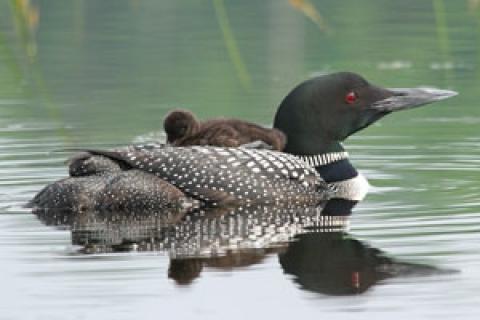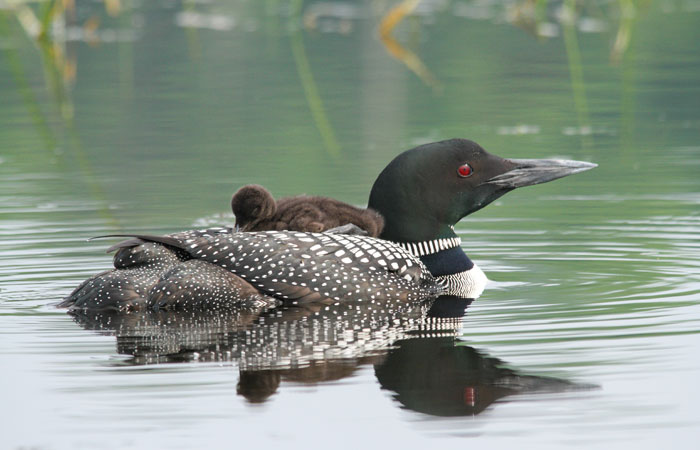
Wildlife photography is a passion of mine, and although it is hard to narrow down a favorite subject to capture on film, the common loon certainly holds a special place in my heart.
With their striking colors, predicable behavior attributes, and penchant for taxiing newborn chicks on their back, the common loon is worthy of some photo time while out on the water this summer.
If you're interested in outdoor photography, here are five tips to help you get that perfect photo album shot of a loon.

| The loon is one of the author's favorite subjects to photograph in the wild. |
#1. Shoot Low
Try to take images as close to the level of the water as possible. While in the boat, my tripod is set to the lowest setting, enabling each of the images to have an intimate and natural feel to them. If hand-holding your camera, sit or lay in your boat or canoe to create that perfect frame.
#2. Anticipate the Action
One behavioral characteristic of loons that makes for a striking shot is the "wing stretch." Generally done after being submerged, the flapping of the wings is a way for loons to stretch muscles as well as expel water. Keep your subject in the view finder to capture these key moments. Hints that a wing stretch is about to happen are the rising of the chest and head slowly out of the water.
#3. Dial in Shutter Speed
Some loon behaviors, such as diving, wing stretching and flight, require a fast shutter speed in order to freeze the action. 1/1000ths of a second is the bare minimum your camera should be set to capture these movements. The higher that bottom number the better. Take test shots continually throughout your shooting session to ensure your camera will be ready when the fun begins.
Continuous shooting mode should also be set. This will ensure you capture an entire sequence of a behavior from start to finish.
#4. Outdoor Lighting is Crucial
Lighting can make or break an image, and with loon photography, this is certainly more evident. Schedule your shooting times for early morning or late afternoon/evenings. The sun will be relatively low in the horizon at these times, lighting up the loon perfectly. Overcast days can also bring a different mood to your images and will minimize harsh shadows and "blown out" spots. Stick to fishing during the midday periods.
#5. Focus on the Eye
The perfect loon image should have a tack-sharp eye portrayed. Use single point focusing and always train it on the eye of the loon. It goes without saying, that if the eye is out of focus in your shot, the image is destined for the trash folder on your computer.
Try your hand at loon photography this summer. Chicks have begun hatching as of the last week or two (with some adults still on nests) offering stellar moments for the wildlife and camera enthusiast.
To see more of the authors loon images, check out his online stock site here: http://justinhoffmanoutdoors.zenfolio.com/p982594035
- 6118 views

